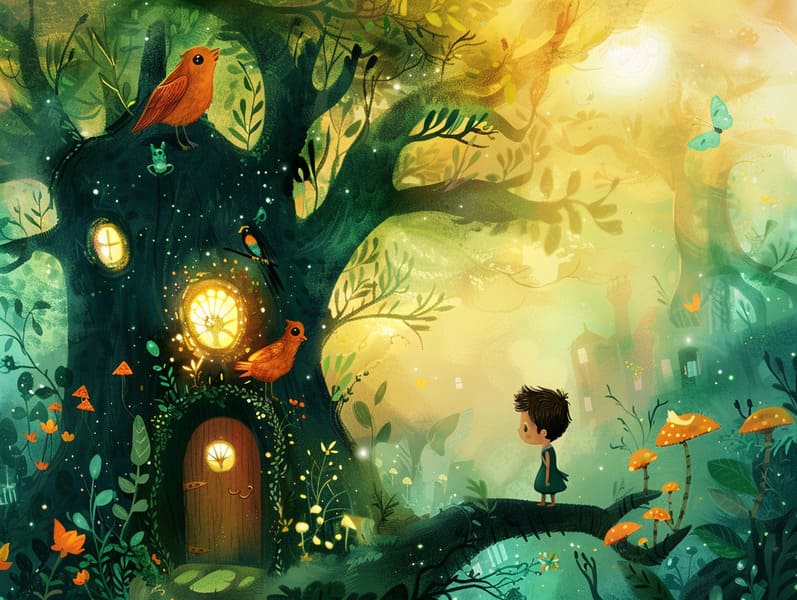The Beginning of Traditional Fairy Tales with Their Undying Allure.
The Beginning of Traditional Fairy Tales with Their Undying Allure.
Blog Article

Traditional fairy tales have ancient roots. These narratives have been shared from one generation to the next well before they were ever published. They developed from a variety of societies, including Eastern traditions. They were initially shared among older generations, often carrying themes and messages pertaining to the societal norms and beliefs of the time.
The renowned Brothers Grimm, Jacob and Wilhelm Grimm, were among the first to assemble many of these beloved narratives. Their anthology, "Grimm's Fables," included narratives like "Cinderella," "Little Brother and Little Sister," and "The True Story of Snow White," which have since become hallmarks in the world of iconic fairy tales. Similarly, H. C. Andersen's imaginative narratives, such as "The Mermaid's Tale," and "The Ugly Duckling," have touched hearts worldwide, guaranteeing their place in the pantheon of classic fairy tales.
Despite their ancient origins, fairy tales remain as relevant as ever, especially as kids' bedtime tales. These magical stories are now available in many formats, including colorful picture books, enchanting animations, and digital fairy tales.
Their continued relevance can be linked to several fascinating points:
Moral Lessons: Timeless fairy tales often illustrate important moral lessons. Narratives like "The Story of the Boy Who Cried Wolf" teach the significance of integrity, while "The Race of the Tortoise and the Hare" demonstrate the traits of steadfastness and meekness. These stories offer young readers clear distinctions between ethical and unethical, guiding their moral compass in a gentle yet impactful way.
Compassion and Insight: Fairy tales frequently portray individuals facing problems and hurdles, inspiring young listeners to identify with their struggles and back their triumphs. For instance, "The Tale of Beauty and the Beast" conveys the benefit of appreciating inner worth to recognize the inner core of a individual, developing sympathy and discernment.
Cultural Knowledge: Many traditional fairy tales are rich in the cultural contexts from which they emerged. Reading these fairy tales can provide captivating looks into different historical contexts, nurturing a sense of global respect and comprehension.
Inventiveness and Imagination: The supernatural elements in fairy tales—magic wands—invigorate children’s fantastical thinking. These narratives transport readers to fantastical realms, engendering inventive dreams and a sense of curiosity that awesome site continues a lifetime.
Old fairy tales are not only whimsical but also edifying. They work as entrancing tools in strengthening various brain and heart skills in young readers. When classic fairy tales are recited, they promote language development by introducing new vocabulary and complicated sentence structures. This practice also fosters auditory perception and attentiveness, as little ones remain attentive, eager to see what happens next.
Furthermore, exploring the themes and characters of timeless fairy tales can foster reasoning skills and thinking skills. Children are educated to identify patterns, predict happenings, and grasp cause and effect. These discussions also further the young verbalize their thoughts and feelings, strengthening their emotional intelligence.
In today’s high-tech era, the presence of digital storybooks has made these stories more within reach than ever. Websites and online apps give ample collections of famous fairy tales that can be perused or listened via anytime, anywhere. Fairy tales voiced are particularly well-liked, extending an engaging way for the young to immerse in these fascinating tales. Read-aloud stories and voiced videos guide characters and settings to life, often supplemented by enchanting soundtracks and soundtracks that augment the tale journey.
The everlasting appeal of ancient fairy tales lies in their ability to alter to modern days while keeping their core values. Contemporary retellings of these narratives often highlight more representative characters and modern settings, making them relatable to today’s audience. However, the underlying themes of valour, understanding, and justness remain unchanged, continuing to impact children of all ages.
Timeless fairy tales also offer a sense of familiarity and recognition. They highlight a structured narrative with a recognizable beginning, middle, and end, often ending with the termination of conflicts and the triumph of morality over immorality. This dependability can be soothing for the young, extending a sense of steadfastness in an inconstant world.
Ancient fairy tales continue to captivate and educate new generations, maintaining their loveliness and meaningfulness in modern society. As kids' bedtime tales, they grant access to a perfect blend of charm and enlightenment, enriching moral values, empathy, and creativity. The availability of online storybooks and the sought after status of fairy tales spoken warrant that these classic narratives remain obtainable to new generations.
By guarding and making known these narratives, we continue to glorify the rich tapestry of legends and cultural heritage. Whether you are enjoying a colorful picture book, accessing a electronic library, or playing an voice book, the wonder of Grimm's fairy tales is always within reach. These stories teach us of the invariable strength of stories and its ability to join us across generations and cultures.
Regardless if you are discovering a artistically illustrated book, exploring a web collection, or listening through an read-aloud story, the delight of popular fairy tales is always within reach.
These tales illustrate of the enduring impact of stories and its ability to tie us across generations and cultures, weaving a spell that delights and instructs alike.